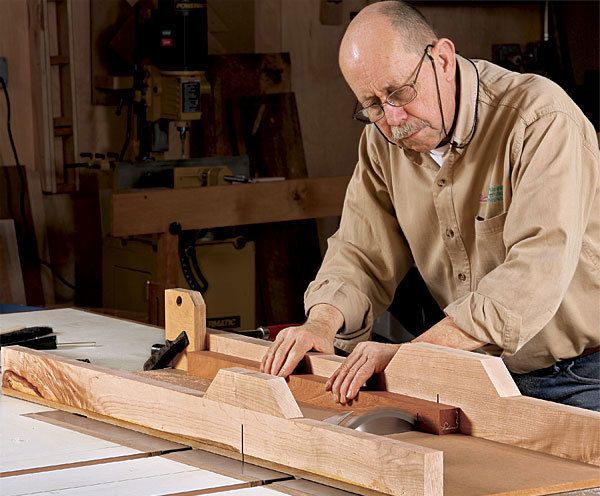Foolproof Crosscut Sleds
Innovative approach guarantees perfect results
Synopsis: The secret to precise, repeatable crosscuts on the tablesaw, the crosscut sled has always been a bit tricky to make. For starters, you need the runners to fit the miter slots securely, and then you need to attach the rear fence perfectly square to the blade. Neither technique is a piece of cake, but Alan Turner’s sled design makes both of them accessible. He assembles the base in two pieces, and then joins them for a perfect fit in the miter slots without any slop or wiggle room. He also found a way to easily fine-tune the angle of the rear fence during glue-up so that it is perfectly square to the blade and stays that way.
The tablesaw may be your shop’s most valuable cutting tool, but for precise, repeatable crosscuts it needs a little help from a sled. The sled holds the work securely with its long edge at a precise right angle to the blade, so you get perfectly square ends when cutting pieces to length, the key to gap-free joinery. With a zero-clearance slot cut through it, the sled even prevents chipout at the edges.
The trick to building an accurate sled has always been to get the runners to fit the miter slots snugly without any wiggle room, and to attach the rear fence perfectly square to the blade—neither is easy to pull off. The technique I use at the Philadelphia Furniture Workshop simplifies both tasks and ensures dead-accurate results.
For starters, I assemble the base in two pieces, first attaching the runners at the bench. Then, with the runner in the miter slot, I trim each individual base piece with a sawcut that creates a zeroclearance edge that is perfectly parallel to the blade.
To help ensure that the runners don’t wiggle in the miter slots and yield inaccurate cuts, I lightly clamp them snug against the inside edge of the slots when gluing on the front fence.
And, at the critical step of attaching the rear fence, I found a way to easily fine-tune the angle during glue-up so that it is perfectly square to the blade and stays that way. Armed with these simple techniques, you can crank out a number of sleds suited to specific tasks, instead of struggling to make just one. Instead of the typical medium-size sled, which is undersized for plywood cuts but too bulky for narrow crosscuts in solid stock. You might even add one with a wider slot for dadoes and bevel cuts. I’ll build the smaller sled here, the one you’ll use 90% of the time. Let’s get started.
From Fine Woodworking #227
For the full article, download the PDF below:



















Log in or create an account to post a comment.
Sign up Log in